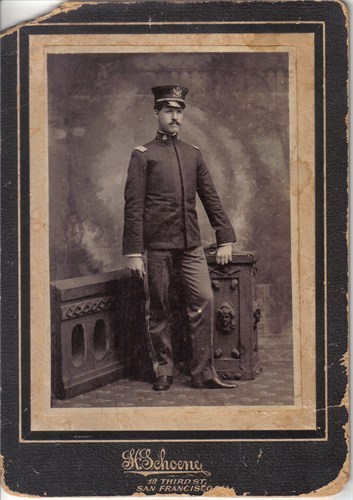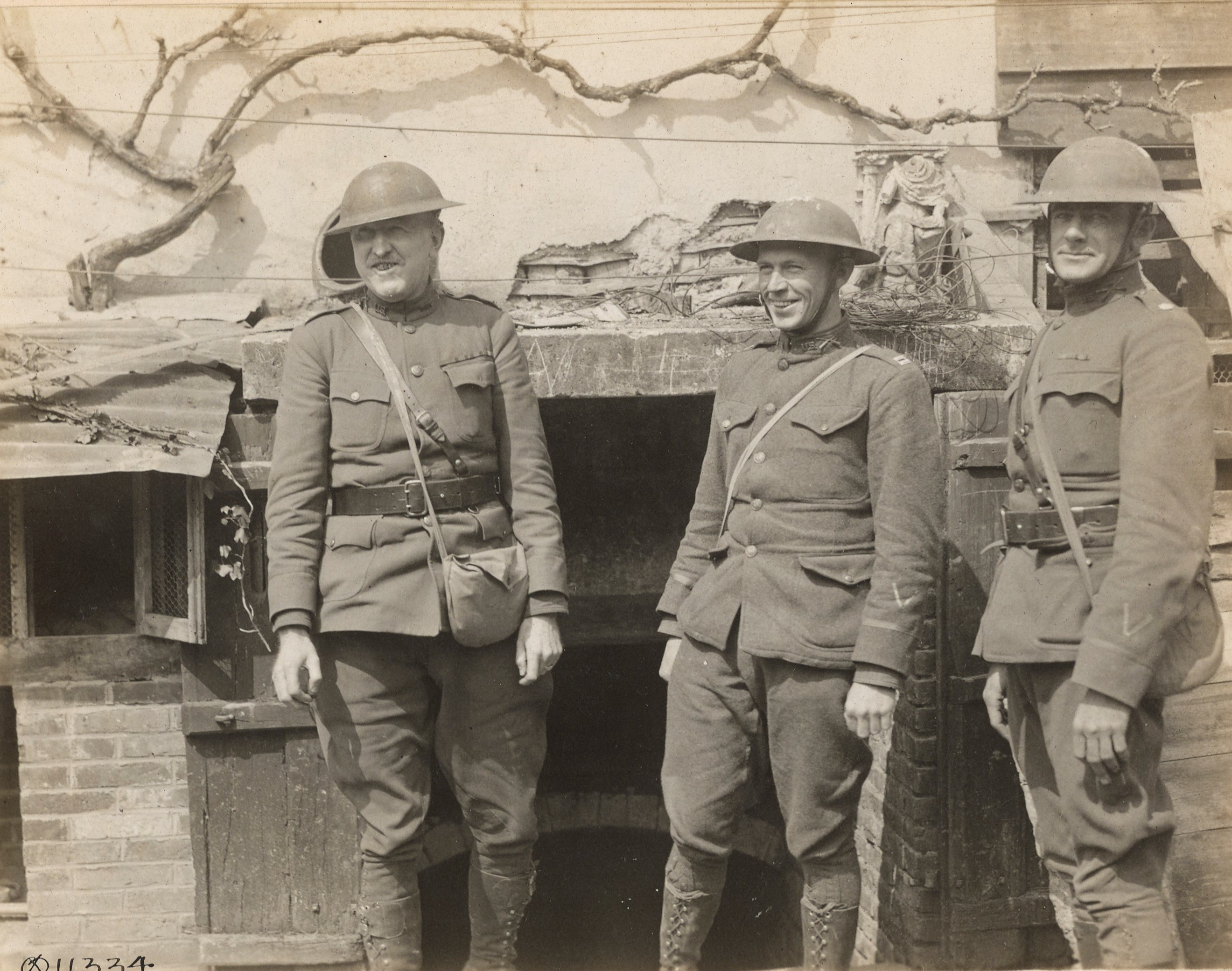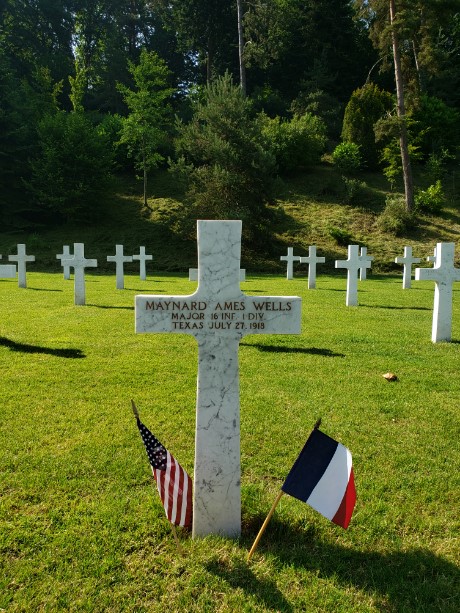Major Maynard Ames Wells

- Unit: 1st Division, 16th Infantry Regiment, 2nd Battalion
- Date of Birth: November 30, 1873
- Entered the Military: November 30, 1898
- Date of Death: July 27, 1918
- Hometown: San Antonio, Texas
- Place of Death: near Soissons, France
- Cemetery: Plot B, Row 9, Grave 58. Aisne-Marne American Cemetery, Belleau, France
Plano East Senior High School
2018-2019
Early Life
Maynard Ames Wells was born in December of 1873 in Virginia. Not much is known about Maynard’s early life. He was one of 13 children born to Sarah Miranda “Randy” Altizer, age 23, and Archibald Grief Wells, age 26, a Methodist-Episcopal minister and Confederate veteran of the Civil War.
On November 2, 1911, Wells married Clara Rossy York in San Antonio, Texas. They had two daughters during their marriage. Marjorie Emma, was born on September 14, 1913, and Mary Elaine was born on October 3, 1917.

Military Experience
Wells’s story became clearer in 1899 when he joined the U.S. Army at age 26 as a private in the Virginia Coastal Artillery. He rose through the enlisted ranks as a corporal in the artillery and then as a sergeant in the infantry. In 1902, he earned a commission as an infantry lieutenant and was reassigned to San Antonio, Texas where he was living in 1914 when the Great War broke out in Europe.
In summer 1917, Wells shipped out with the 16th Infantry Regiment of the U.S. Army’s 1st Division as part of the American Expeditionary Force (AEF). AEF forces entered the fighting in the late spring and early summer of 1918. The Army’s 1th and 2nd Divisions, alongside French troops, were among the first Americans to engage the enemy. Germans forces staged an offensive to try and disrupt the stalemate and advance towards Paris along the Paris-Soissons Road, about 75 kilometers north of the capital. The 16th Infantry Regiment was ordered into some of the toughest fighting in the counteroffensive to hold Soissons and push the enemy back.
On the morning of July 18, Wells led his 2nd Battalion on the offensive against heavy enemy fire. U.S. Army regulations dictated that infantry officers lead from the front, where their men could see and follow them. The details of the day remain chaotic even today. The engagement was fierce and the day was hot and dry. Field notes from Major Wells himself reveal that his men faced heavy machine gun fire and ran low on water as the fighting continued.
In the afternoon, after facing heavy losses, American and French forces advanced across the Paris-Soissons Road. They had to take cover in a ditch on the far side of the road to avoid heavy machine gun fire. German airplanes dropped bombs on the road, temporarily halting the advance. Private Roush, a battalion runner on the scene, described one of those bombs exploding near Wells. The bomb pierced Wells’s body with shrapnel in multiple places, including in his right hip and in both feet. He was evacuated, but one of his junior officers, Lieutenant Herndon, sent a message to his superiors saying the damage seemed too severe for recovery to be possible.
Wells succumbed to his wounds nine days later on July 27, the last day of the fighting around Soissons. This often forgotten piece of the Second Battle of the Marne was essential to overall allied victory. But the victory was costly. The AEF suffered thousands of casualties among its enlisted forces and lost many of its professional officers.

.jpg)
.jpg)
Eulogy
Wells was buried in a temporary cemetery and his remains were relocated to the Aisne-Marne American Cemetery in 1921. He was survived by his wife and two daughters as well as both parents and at least one brother. The Wells family, like many others, made many inquiries about his remains through the systems in place at the time.
When the time came to make a decision on whether to repatriate his remains or to have them permanently buried in France, Wells’ widow had already remarried and so she left the decision to his parents. Perhaps to honor his life and sacrifice as a soldier, his mother and father chose to have him buried in France along with the men with whom he fought and died.


Reflection
Bibliography
1st Corps Headquarters – Orders; World War – I Organization Records, Records of the American Expeditionary Forces (World War I), Record Group 120 (Box 167); National Archives at College Park, College Park, MD.
1st Division; Records of Combat Divisions, 1917-1942, Records of the American Expeditionary Forces (World War I), Record Group 120 (Boxes 43-44); National Archives at College Park, College Park, MD.
1st Division; Records of Combat Divisions, 1917-1942, Records of the American Expeditionary Forces (World War I), Record Group 120 (Box 183); National Archives at College Park, College Park, MD.
Birth Announcement of Mary Elaine Wells. Army and Navy Register, October 29, 1917.
Cooper, Lieutenant E. H. Entrance to regimental headquarters, 16th Regt. Inf…, blocked by a bursting shell. Broyes, France. Photograph. May 2, 1918. National Archives and Records Administration (111-SC-011334-ac). Image.
First Division operating anti-aircraft gun, Menil-la-Tour, France. Photograph. February 17, 1918. National Archives and Records Administration (111-SC-007592-ac). Image.
Johnson, Douglas and Rolfie Hillman. Soissons 1918. College Station: Texas A&M University Press, 1999.
“Maynard Ames Wells.” American Battle Monuments Commission. Accessed August 22, 2019. www.abmc.gov/node/339787#.XCERaVxKiUk.
Maynard Ames Wells in his uniform, San Francisco, California. Photograph. c. 1900 American War Memorials Overseas. Image.
Maynard Wells World War I Burial Case File and VA Master Index Card; Correspondence, Reports, Telegrams, Applications and Other Papers relating to Burials of Service Personnel, Records of the Quartermaster General’s Office, 1915-1935, Record Group 92; National Archives and Records Administration – St. Louis.
Neiberg, Michael S. The Second Battle of the Marne. Bloomington: Indiana University Press, 2008.
Trabald, Private Edward R. Officers at regimental hdqrts. 16th Regt. Inf….Broyes, France. Photograph. May 2, 1918. National Archives and Records Administration (111-SC-011334-ac). Image.

